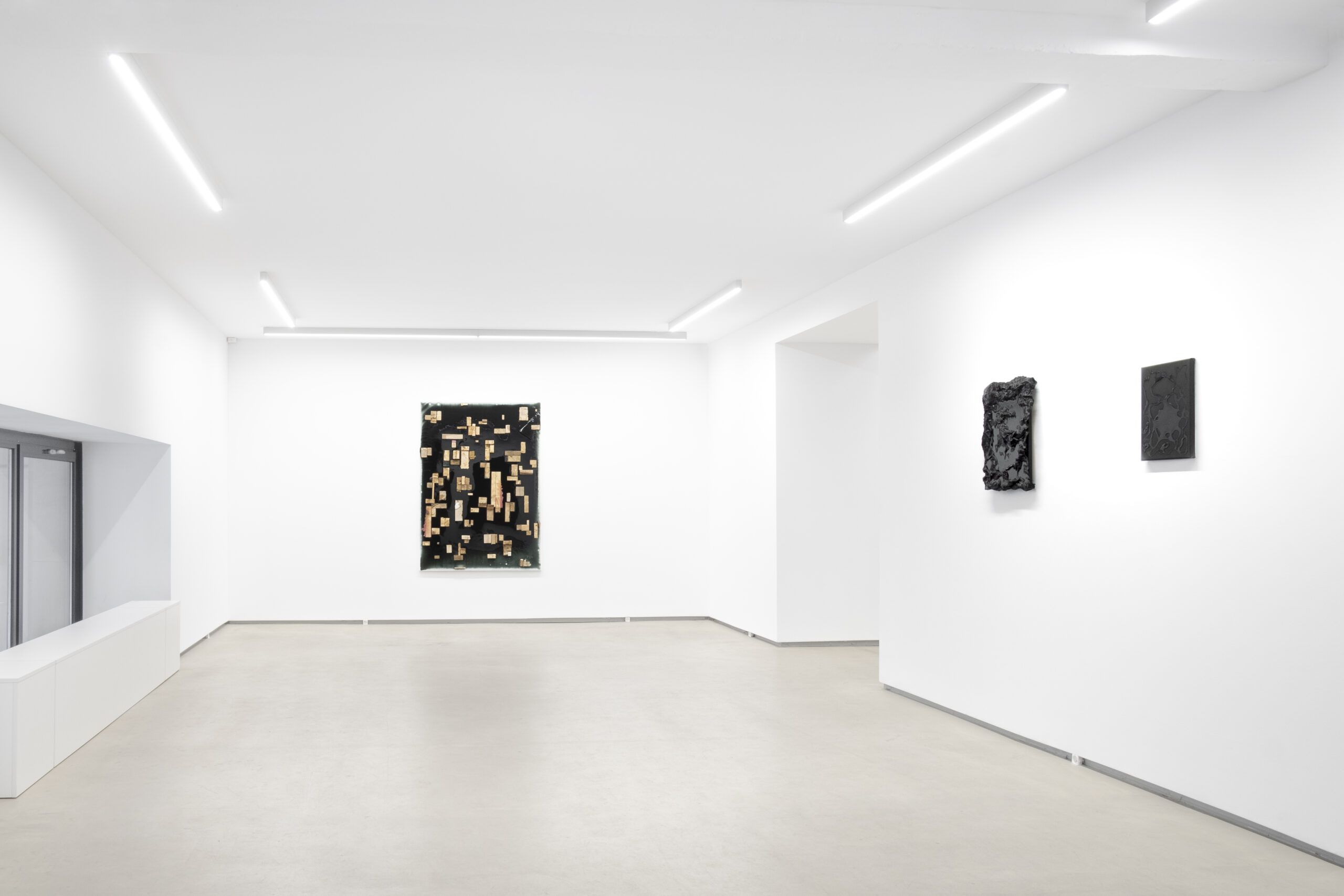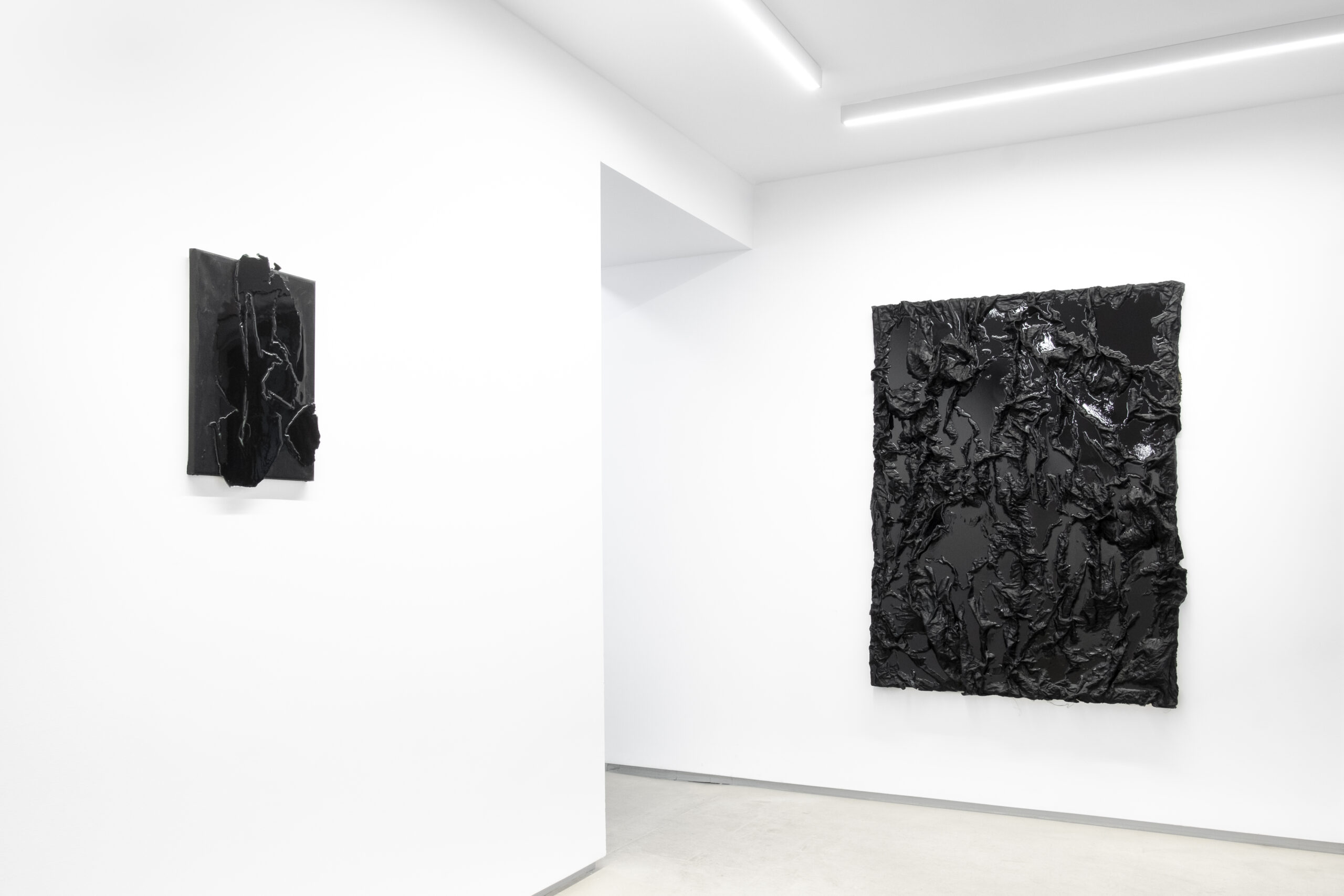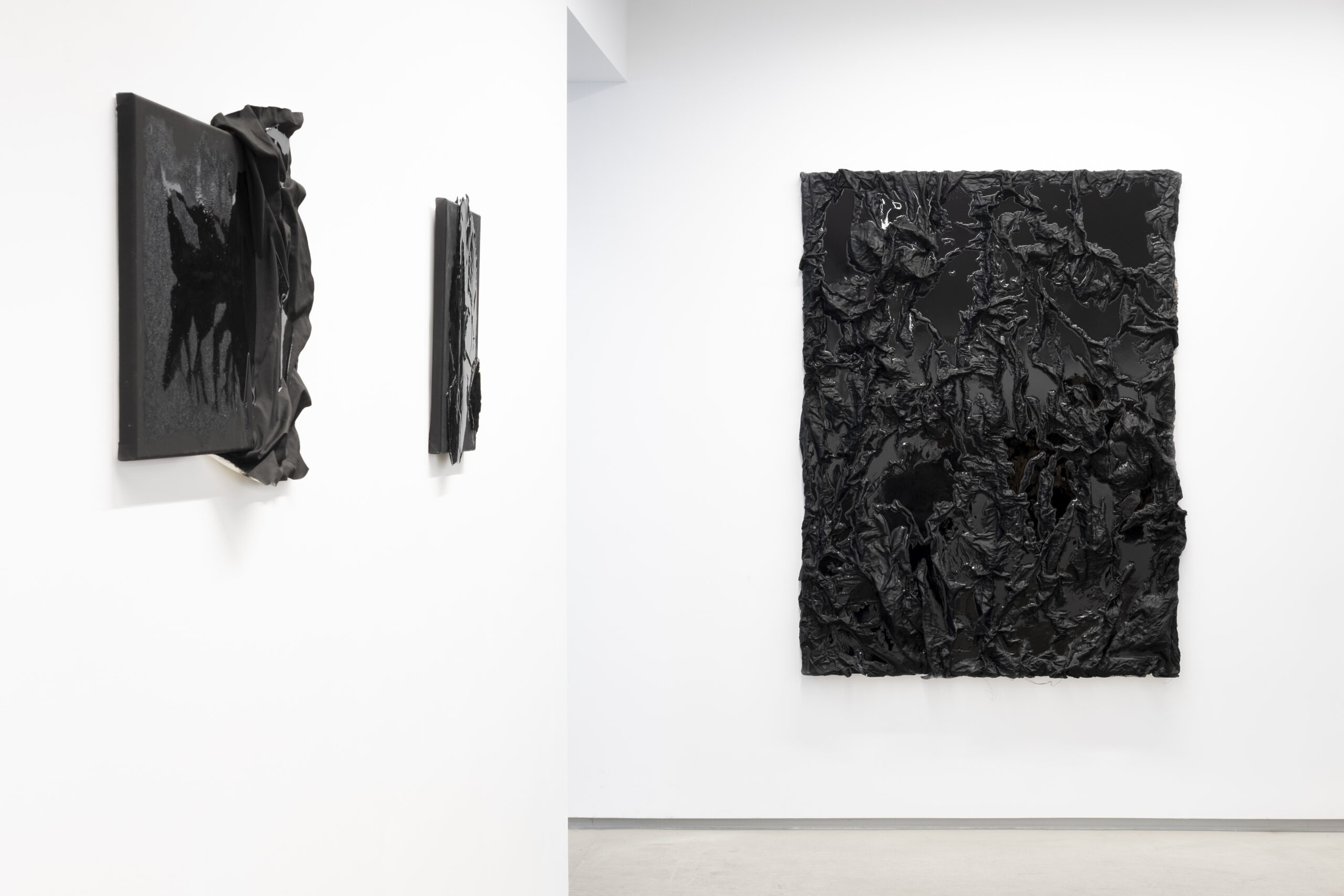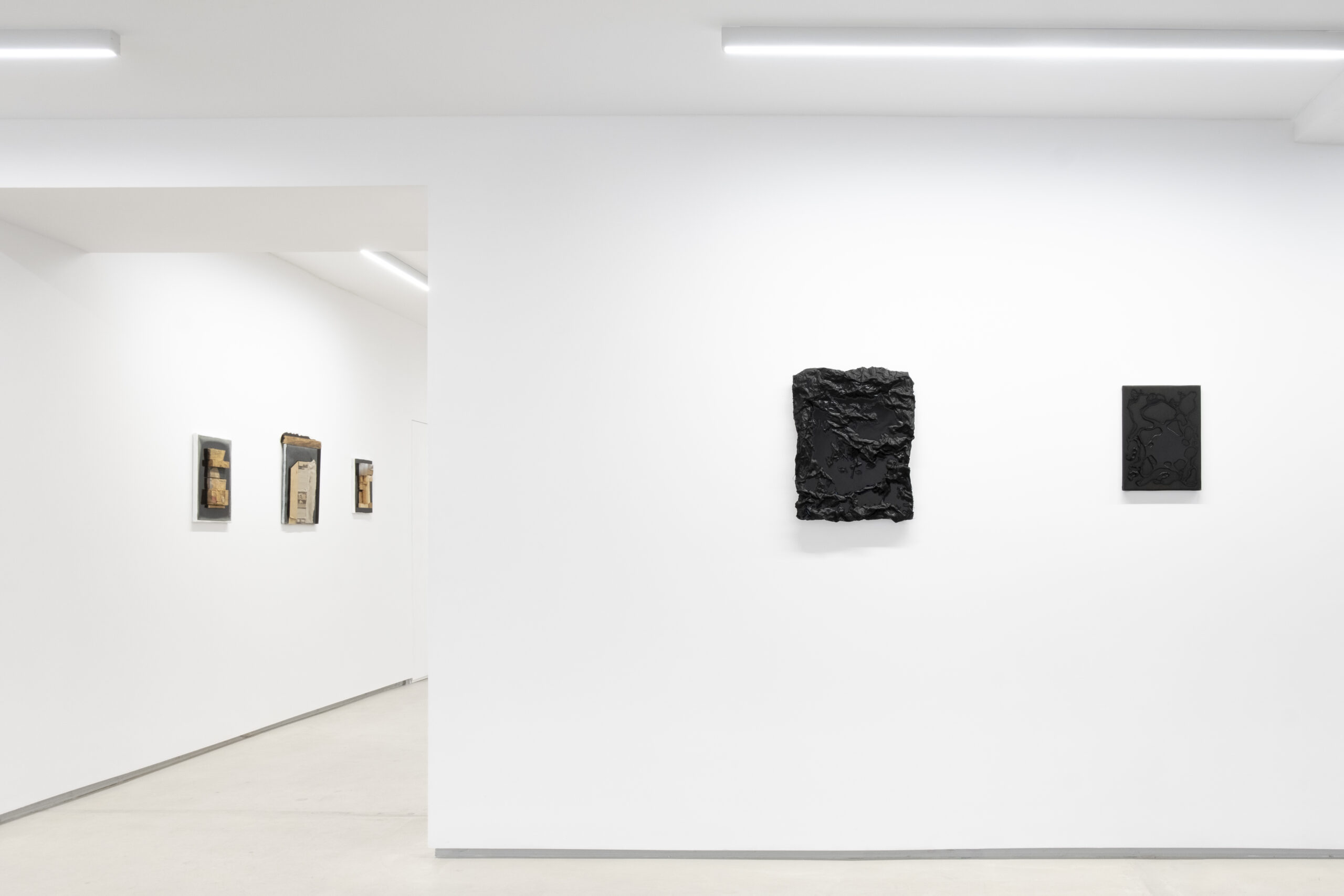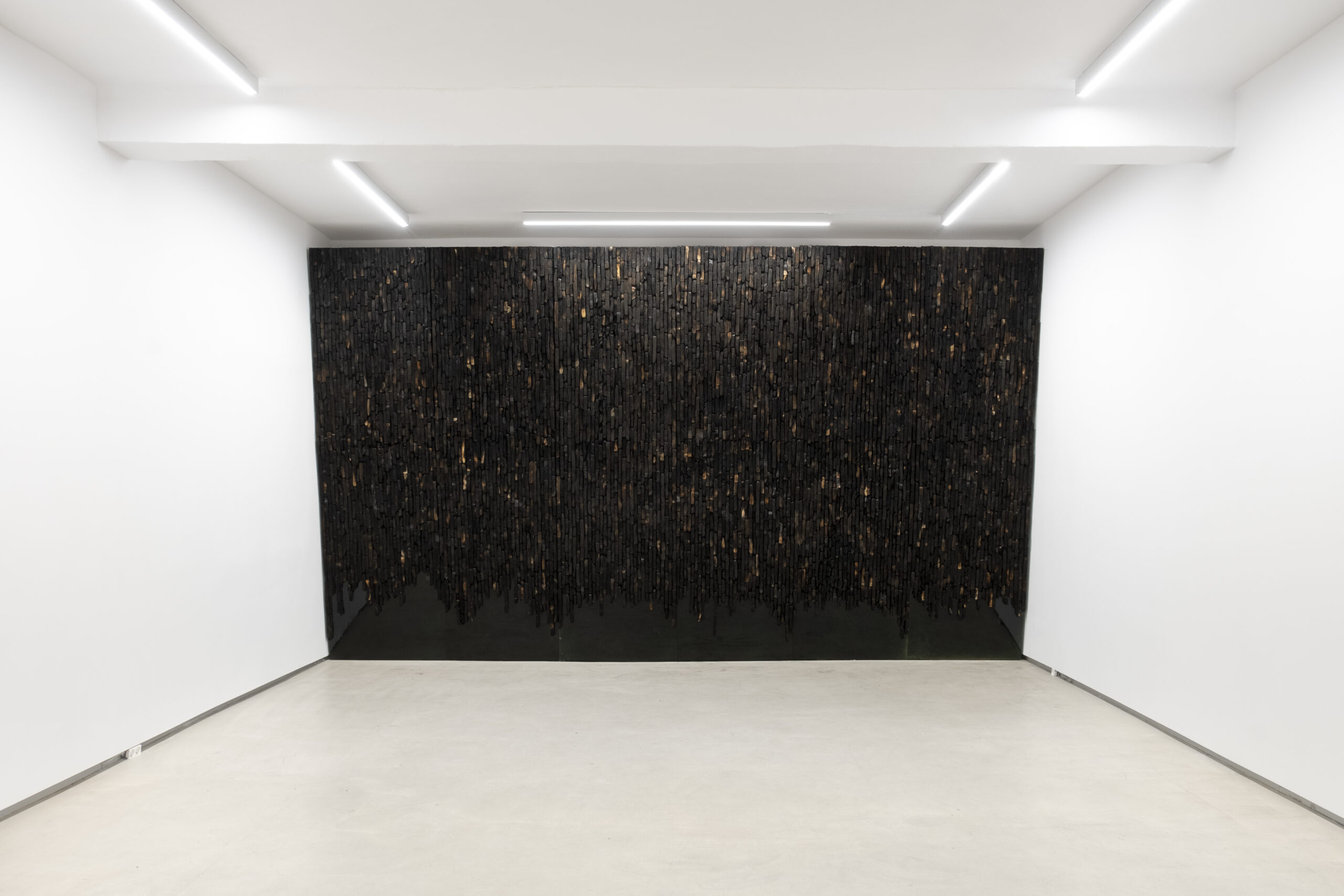Bartosz Kokosiński
Painting it Black
January 14 – March 12, 2022
The exhibition title Painting it Black refers to the idiom to paint a black/bleak/grim picture of something. Heralding a fatalistic vision of the end, it is permeated with pessimism. However, the phrase does not mean apathy or resignation from the action. It is a kind of balancing on a tightrope, playing with fire. Let us, therefore, begin with the end, that is, with an ill omen, not necessarily considering whether it has come true, but approaching its source with small steps, to the rhythm of a misguided elegy on the death of painting.
A picture understood as a material object consists of several basic components, which are thick linen or cotton fabric, nails, a wooden frame, and bone glue. These are the base creations of a human. Heraclitus of Ephesus perceived fire as a fundamental element of the world. He promoted the view that the universe had not been created by any god or man, but that it had always been, was, and would be a living fire. People have acquired the ability to control it, learned how to kindle it, and domesticated it. They have enclosed it in lighters and fireplaces. The same people sometimes play with fire, set the world on fire, or add fuel to the fire. They wield fire, having mastered fire breathing to perform it to the rhythm of dubstep and arouse admiration in onlookers. Humans cause fires, create charred wastelands that turn into a desert of reality, where only sadness, malaise, and the smell of petrol can be felt.
The space is filled with black mirrors. Sometimes they resemble blocks of flats with brightly lit windows. At other times, they look like cities seen from a bird’s eye view. Their topography is based on the principle of repetition: grids of vertical and horizontal lines in a world of rational, precise geometry. They are like futuristic machines in front of which we are acting out the myth of Narcissus while perambulating unhurriedly. They are an inverted panopticon in which we control ourselves. A gloomy cabinet of mirrors, which is a simulation of our surrounding environment. A dystopian vision of the future predicted by a human. The fear that haunts us is mutual: it grips us, standing in front of a finished painting, just as it overcomes the artist, who stands in front of an empty canvas. Powerlessness in the face of nothingness can be overwhelming. Emptiness demands to be filled, calling for the intervention of a human actor. Returning to the empty canvas may remind us of the question of the beginning of the world, its arche.
Franciszek Smoręda
